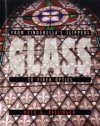Fog Buster Additional Information
Information about the use of a porous glass coating to prevent glass from fogging up can be found at web.mit.edu/newsoffice/2005/fog.html.
You can learn more about research on textured surfaces for glass at researchnews.osu.edu/archive/lotleaf.htm (Ohio State University).
Information about XeroCoat can be found at optics.org/articles/news/10/9/16(Institute of Physics).
You can learn more about light and color at webexhibits.org/causesofcolor/(WebExhibits).
Cunningham, Aimee. 2005. Fog be gone: Nanocoating clarifies the view. Science News 168(Sept. 3):148. Available at http://www.sciencenews.org/articles/20050903/fob4.asp.
Sohn, E. 2004. Inspired by nature. Science News for Kids (Nov. 3). Available at http://www.sciencenewsforkids.org/articles/20041103/Feature1.asp.
______. 2003. Butterfly wings and waterproof coats. Science News for Kids (March 5). Available at http://www.sciencenewsforkids.org/articles/20030305/Note2.asp.
Books recommended by SearchIt!Science:
 |
Glass: From Cinderella’s Slippers to Fiber Optics — Ruth G. Kassinger
Published by Twenty-First Century Books/Millbrook Press, 2003.
Around 2500 B.C. in Mesopotamia (what is now Iraq), glassmakers fashioned colorful glass beads and jewelry. It wasn’t until a thousand years later, however, that people figured out how to make glass bottles and other useful things. Ancient Egyptian glassmaking, Roman glassblowing, Islamic luster painting, and European stained glass are all described in the beginning chapter of this history of glass. The second chapter discusses the magic and mystery of glass, from witch’s balls to magic mirrors, and the third chapter explores the chemistry and physics of glass. Glass artistry, microscopes, and optical glasses are described in a chapter called “The Art of Glass Containers,” and a final chapter looks at modern glass—light bulbs, fiber optics, vitrification, and the studio glass movement. |
Power Words
glass A hard substance that lets light through and breaks easily. Glass is made by melting sand with lime or sodium carbonate.
polymer A chemical compound that is made up of a chain of smaller molecules. Cellulose is a polymer that occurs naturally in plants, and nylon and acrylic are polymers that scientists have created in the laboratory.
silica A chemical compound that is made of the elements silicon and oxygen. Silica is found in most kinds of rocks and is the main chemical compound in sand. Silica is used to make glass, concrete, and other materials.
Copyright © 2002, 2003 Houghton-Mifflin Company. All rights reserved. Used with permission.
